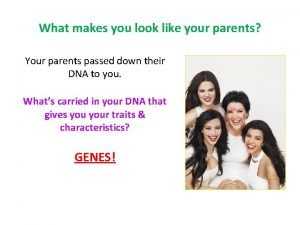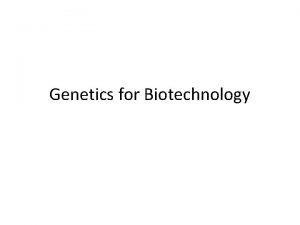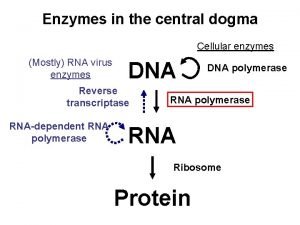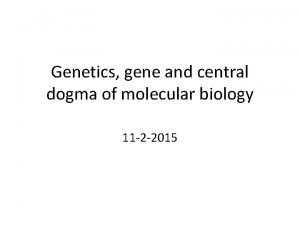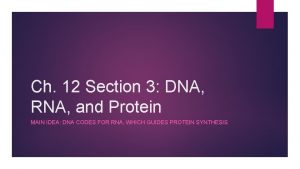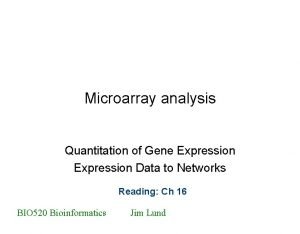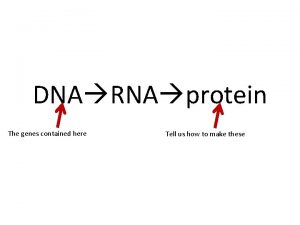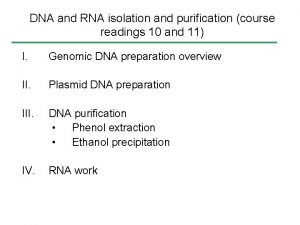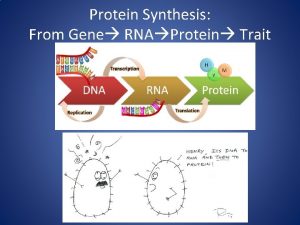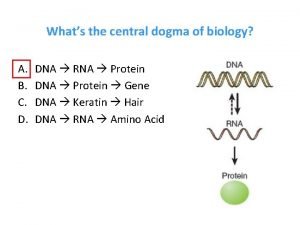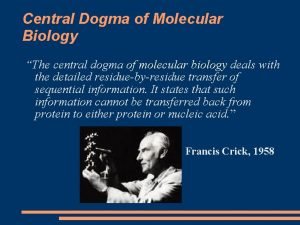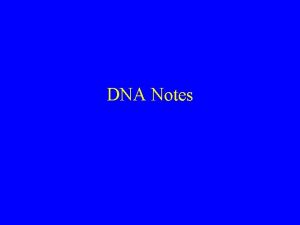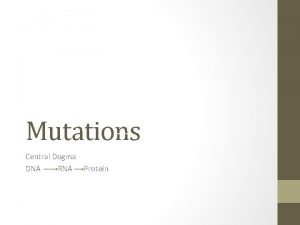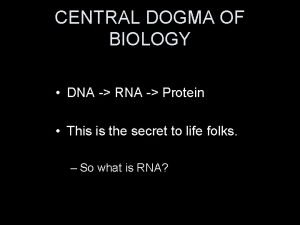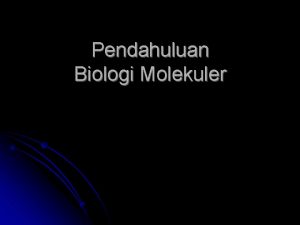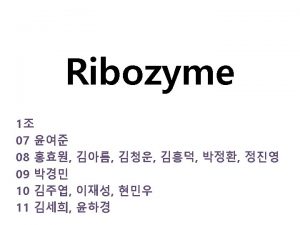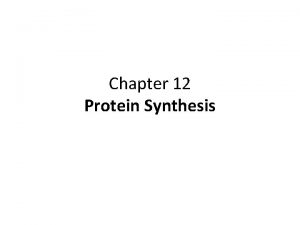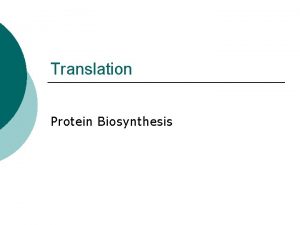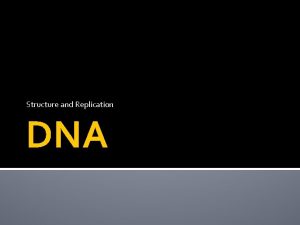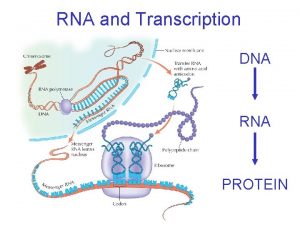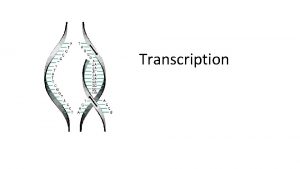Your Vote Counted Central Dogma DNA RNA Protein













- Slides: 13

Your Vote Counted! Central Dogma (DNA → RNA → Protein) 62% Reproduction, Inheritance, and Meiosis 38%

Entry Task: Lab Notebook 2/2/15 Create and fill in the table in your lab notebook: Inputs Photosynthesis Cellular Respiration Combustion Outputs

Vocabulary In photosynthesis, the inputs (starting materials) are carbon dioxide (CO 2), water (H 2 O), and sunlight energy. The outputs (ending materials) are glucose (C 6 H 12 O 6) and oxygen (O 2). In chemistry, the inputs are called the reactants and the outputs are called the products. Reactants → Products ● Write the equation for photosynthesis and label the products and reactants.

Vocabulary Chemistry is the study of matter and its properties. Matter is something that has mass and takes up space. The atom is the fundamental unit of matter. Atoms combine together in specific ways to form molecules.

Vocabulary Atoms consist of protons (+ charge), neutrons (neutral charge), and electrons (- charge). Elements are defined by how many protons they have. For example, carbon has 6 protons:

Balancing Chemical Equations In biology and chemistry, just like in math, both sides of an equation must be balanced. Is the equation for photosynthesis balanced? CO 2 + H 2 O + sunlight → C 6 H 12 O 6 + O 2 Why or why not? How many atoms of carbon, oxygen, and hydrogen and in the reactants? How many in the products?

Balancing Chemical Equations Photosynthesis Equation: CO 2 + H 2 O + sunlight → C 6 H 12 O 6 + O 2 Reactants Products Carbon 1 6 Oxygen 3 8 Hydrogen 2 12 Is the equation balanced? How do you know?

Balancing Chemical Equations To balance the equation for photosynthesis, we need to adjust the number of reactant and product molecules: __CO 2 + __H 2 O + sunlight → __C 6 H 12 O 6 + __O 2 6 CO 2 + 6 H 2 O + sunlight → 1 C 6 H 12 O 6 + 6 O 2 Reactants Products Carbon 6 6 Oxygen 18 18 Hydrogen 12 12 ✔

Your turn! Working with a partner. . . Balance the equation for cellular respiration. 1. Write the equation (Reactants → Products) 2. Adjust the number of reactant and product molecules 3. Check your work by filling in the table: Reactants Carbon Oxygen Hydrogen Products

Your Turn! Balance the following reaction: CH 4 + O 2 → CO 2 + H 2 O

Combustion The process of burning organic compounds is called combustion. In biology and chemistry, organic means “carbon-containing” molecules. How many organic molecules can you list in one minute?

Why Do Candles Burn? Candle wax is made of a substance called paraffin. Paraffins are long hydrocarbon molecules. The chemical formula of paraffin is Cn. H 2 n+2 (example: C 20 H 42). A molecule of paraffin looks like:

Paraffin Wax Imagine a molecule of paraffin wax with 10 carbon atoms. How many hydrogen atoms would the molecule have? Explain your answer to your table partner.
 Que es
Que es Mutations quiz
Mutations quiz Dna rna protein synthesis homework #2 dna replication
Dna rna protein synthesis homework #2 dna replication Initiation steps
Initiation steps Molecular biology
Molecular biology Chapter 12 section 3 dna rna and protein
Chapter 12 section 3 dna rna and protein Dna rna and protein synthesis study guide
Dna rna and protein synthesis study guide Microarray analysis
Microarray analysis Dna rna protein
Dna rna protein Dna rna protein diagram
Dna rna protein diagram Protein
Protein Your vote your choice
Your vote your choice Whats the central dogma of biology
Whats the central dogma of biology Whats the central dogma of biology
Whats the central dogma of biology
